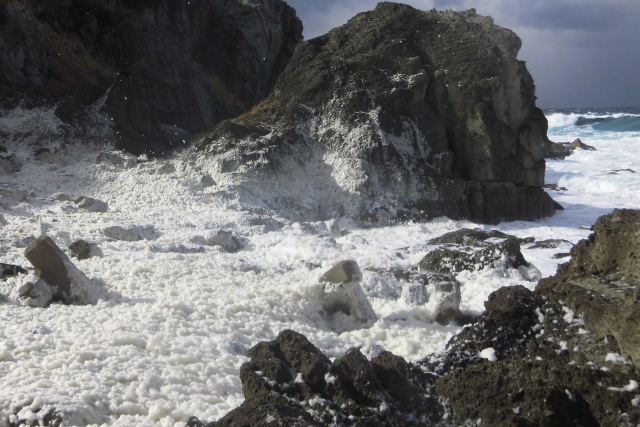Nami no Hana (波の花)
Nami no Hana
波の花
Today, I would like to introduce the term ‘nami no hana‘ (波の花), which even Japanese people do not use frequently.
今日は、日本人も普段あまり使わない「波の花」という言葉を紹介します。
‘Nami‘ (波) means “(sea) wave,” and ‘hana‘ (花) means “flower,” but can you imagine what the combination ‘nami no hana’ (literally means “flowers of waves”) means?
「波」は “(sea) wave”、「花」は “flower” を意味しますが、これらを組み合わせた「波の花」が何を意味するか想像できるでしょうか?
There are two answers.
正解は二つあります。
One is simple — it means sea waves with white foam.
一つは単純で、白く泡立った海の波のことです。
The sea foam is regarded as flowers or ears of rice.
白く泡立った波を、花(穂)に見立てているわけです。
The other is “salt,” which is made from seawater.
もう一つは、海水から作られる「塩」です。
In the past, since the word ‘shio‘ (塩 – “salt”) could be misunderstood as ‘shi wo‘ (死を – “death to you”), court ladies used ‘nami no hana’ instead of ‘shio’.
かつて、「塩」という文字は「死を」を連想させることから、これを忌み嫌い、「塩」の隠語として「波の花」が使われていたようです。




